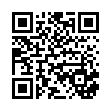finalinfographic (PDF)
File information
Title: finalinfographic
This PDF 1.4 document has been generated by Adobe Illustrator CS5 / Adobe PDF library 9.90, and has been sent on pdf-archive.com on 06/04/2011 at 04:12, from IP address 69.76.x.x.
The current document download page has been viewed 1463 times.
File size: 5.18 MB (1 page).
Privacy: public file

File preview
Typical Day of an Amish
Husband and Wife
5 am
sunrise
8 am
5 am
Rise
Milk cow, feed
other animals
7 am
Prepare breakfast
and lunch pails
for children
Head to fields,
season dictates
activity
Begin laundry
Work in the kitchen
garden, collecting food
or pulling weeds
10 am
sunrise
8 am
Prepare lunch
noon
Preform household
tasks such as ironing,
baking, or sewing
11 am
1 pm
2 pm
2 pm
3 pm
3 pm
Greet children
returning from school
4 pm
5 pm
6 pm
7 pm
Prepare dinner
Return home,
milk cows again
sunset
Perform quiet
household tasks
such as mending
Horse
The leading cause of horse
and buggy accidents are
due to worn out harnesses
breaking. However, there
are no recorded traffic
accidents involving a horse
powered vehicle.
4 pm
5 pm
7 pm
The Amish arrange
1
sunset
Retire
Husband
Steel Tires
When passing another buggy
on the roadway, it is best to
practice caution. It can be
considered offensive, both to
the horse and buggy driver,
to be passed.
6 pm
Eat supper
with family
Personal time to deal
with finances or
quiet Bible study
Amish Horse
& Buggy with Corresponding
Pennsylvania
Traffic Laws
PA law requires a reflective
orange triangle to be placed
on the back of all Buggies.
However, many Old Order
Amish feel that the emblems
are materialistic, preferring
only to use lanterns and
reflective tape.
noon
Eat lunch, discuss
farm happenings
Head to town
to buy and
sell goods
A Typical
Slow Moving
Vehicle Emblem
9 am
10 am
11 am
Black Frame
PA law requires slow
moving vehicles to pull
over to let faster moving
traffic pass.
PA law requires reflector
tape on all seams of the
buggy. Flashing lights (two
on the front, two on the
back) are used in addition to
headlights are to be turned
on at dusk.
7 am
Breakfast and
Bible study
with family
9 am
1 pm
Reflector Tape
& Flashing Lights
themselves into com5
Together
Wife
1
16
1
93
1
36
1
Important Amish
Events
in North America
K
A
C
B
1920
1940
Amish begin
The population
A 1737
B 1920
C
settling in North
reaches 5,000
America, beginning
with 50 families
D
1940 - 1945 Some Amish
men are affected by the
U.S. Draft, only 60 enlist
out of 772
1946 The Federal Government publicly urges Amish
farmers to abandon
horse-drawn farming and
adopt tractors
1960
3
1
11
1
150,000
Sunday service, they
travel to one another’s
means that your
neighbor across the
street could attend a
different church district
G
1980
1990
than yourself. A typical
Amish Church Districts
Amish employees
H 1988
working for Amish
employers are rule exempt
from Social Security tax
by State in 2003
2000
I
U.S. Draft laws
1972 U.S. Supreme Court
rules in favor of Amish
ending education at the
8th grade level
geographic location. For
according to roads. This
50,000
1970
8
homes and are divided
1
100,000
The Amish begin to
1973 U.S. discontinued
E 1966
discuss proposed changes to G the draft
F
2
1
D
1950
375
49
5
0
1930
group has its own name,
usually based in
7
8
200,000
H
E
312
246
250,000
J
I
F
8
church districts. Each
51
66
40
pact groups known as
J
1992 The population
reaches 125,000
2000 The population
reaches 221,000
Less than 20% of Amish
K 2003
men under 65 earn their
living solely by farming.
district size contains
25 - 35 families. When a
district reaches 40 or
more families, they
redraw district
highest Amish populations
IN
43,710
divisions. The largest
OH
58,590
PA
59,350
district had 59 families
under one bishop, a
record set in 2006.
Download finalinfographic
finalinfographic.pdf (PDF, 5.18 MB)
Download PDF
Share this file on social networks
Link to this page
Permanent link
Use the permanent link to the download page to share your document on Facebook, Twitter, LinkedIn, or directly with a contact by e-Mail, Messenger, Whatsapp, Line..
Short link
Use the short link to share your document on Twitter or by text message (SMS)
HTML Code
Copy the following HTML code to share your document on a Website or Blog
QR Code to this page

This file has been shared publicly by a user of PDF Archive.
Document ID: 0000029746.